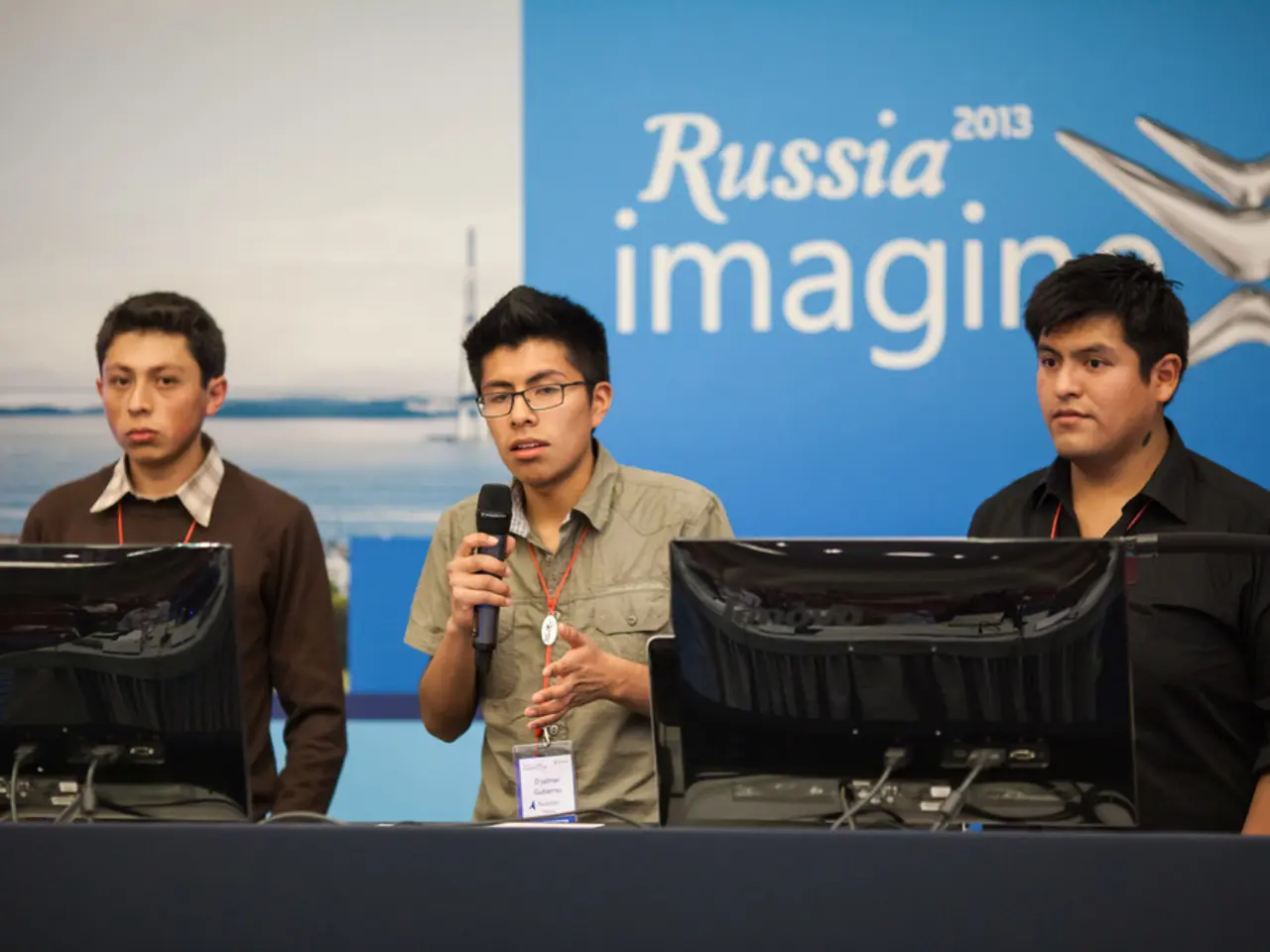Competition in the chip industry intensifies as Groq sets sights on a staggering $6 billion goal.
Groq Challenges NVIDIA Dominance in AI Chip Market
Groq, a U.S.-based AI chip startup, is making waves in the industry with its unique approach to AI inference. Founded by former Google engineer Jonathan Ross, Groq is currently valued near $6 billion and is in advanced talks to raise approximately $600 million to scale its operations and technology [2][5].
Despite this strong valuation and strategic partnerships with companies like Bell Canada and Meta, Groq recently cut its 2025 revenue forecast sharply from $2 billion to $500 million, largely due to delays in a $1.5 billion supply deal with Saudi Arabia and increased competition from NVIDIA and AMD in the region [1].
Groq's AI chips feature a unique streaming processor architecture that specializes in AI inference tasks, offering faster and more efficient performance compared to the traditional GPU architectures used by NVIDIA [2][4]. This specialization allows Groq to target the burgeoning AI inference market, projected to reach $253.75 billion by 2030 [4].
GroqCloud—a development platform supporting over 360,000 developers and open-source AI tools—supports Groq’s goal to capture a large portion of AI compute demand [4]. In comparison, NVIDIA remains dominant due to its rapid innovation cycles, extensive ecosystem, and broader GPU capabilities that cover both AI training and inference.
Groq, by contrast, positions itself as a challenger by betting on AI inference specialization and efficiency, targeting enterprises that require scalable and cost-effective inference hardware [2][4]. However, Groq’s financial challenges and delayed deals illustrate the risks involved in competing against incumbents like NVIDIA, who have more mature market footholds and diversified product lines.
Key points in comparison:
| Aspect | Groq | NVIDIA | |----------------------------|----------------------------------------------|---------------------------------------------------| | Valuation | ~$6 billion (2025) | Much larger, market dominance in AI GPUs | | Funding | Raising ~$600M to scale production | Large, established revenue streams from GPUs | | Architecture | Unique streaming processor focused on AI inference | GPU architecture for both AI training and inference| | Market Focus | Specialized AI inference hardware | Broad AI hardware (training + inference) | | Key Partnerships | Bell Canada, Meta, Saudi Arabia (delayed) | Tesla, cloud providers, broad AI ecosystem | | Challenges | Revenue shortfall, supply deal delays | Facing emerging competitors but with strong lead |
Groq plans to deploy 108,000 LPUs by the end of Q1 2025. These Language Processing Units (LPUs) are purpose-built for sequential processing of language and optimized specifically for inference. Notable backers of Groq include BlackRock Private Equity Partners, Samsung Catalyst Fund, Cisco Investments, AMD Ventures, and Meta (Yann LeCun as technical advisor).
The rise of Groq has broader implications for the AI industry, potentially forcing pricing and strategy changes for Nvidia and providing more options for AI companies. The AI chip market could reach $400 billion in annual sales within five years, according to some analysts.
However, Groq faces challenges in scaling manufacturing and developing ecosystems quickly. Its focus on inference and speed differentiates it from competitors who may focus on training or try to be all things to all people. Groq's LPUs have deterministic performance and lower power consumption compared to traditional GPUs.
In summary, Groq’s current status is that of a rapidly growing but still somewhat financially challenged AI chip startup focusing on niche, specialized inference hardware to compete with NVIDIA’s dominant GPU ecosystem. Its future plans involve scaling production, expanding partnerships, and capitalizing on the AI inference market, although execution risks remain, particularly related to customer deals and competing innovator cycles [1][2][4].
- Groq's unique approach to AI inference has resulted in a significant growth, with the startup currently valued near $6 billion.
- The company is aiming to raise approximately $600 million to scale its operations and technology, focusing on the burgeoning AI inference market.
- Despite partnerships with companies like Bell Canada and Meta, Groq recently cut its 2025 revenue forecast due to delays in a supply deal and increased competition from NVIDIA and AMD.
- Groq's AI chips, featuring a streaming processor architecture, offer faster and more efficient performance compared to traditional GPU architectures used by NVIDIA.
- Groq's business strategy revolves around specializing in AI inference hardware, targeting enterprises that require scalable and cost-effective solutions.
- NVIDIA, with its rapid innovation cycles, extensive ecosystem, and broader GPU capabilities, currently dominates the market and faces emerging competitors, although with a strong lead.
- Groq's financial challenges and delayed deals highlight the risks involved in competing against incumbents like NVIDIA, who have more mature market footholds and diversified product lines.
- Groq plans to deploy 108,000 LPUs by Q1 2025, optimized for sequential language processing, and focus on niche, specialized inference hardware to capitalize on the AI inference market, while facing challenges in scaling manufacturing and developing ecosystems.








